Atlantic Monthly Contributors's Blog, page 427
May 26, 2015
Bernie Sanders Launches His Vermonster Campaign
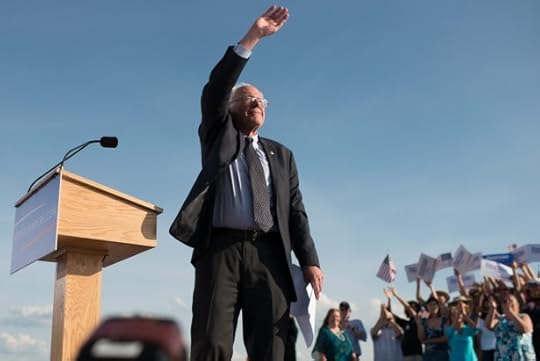
Updated May 26, 2015, 6:35 p.m.
Bernie Sanders is an unconventional candidate, and he’s launching his presidential campaign in a typically unorthodox fashion. Sanders held his “kickoff” event Tuesday in his hometown of Burlington, Vermont. It was a rally, but it was pitched more like a festival, complete with free ice cream from Ben & Jerry’s and a performance by “Mango Jam”—a Vermont-based, six-piece dance band that plays a combination of Zydeco, Cajun, and Caribbean music.
The lure of live music, Phish Food, and a beautiful setting on the banks of Lake Champlain drew a crowd that appeared to number in the thousands, but there was a larger point to this political theater. Like other underdogs before him, Sanders is trying to demonstrate he can mount a plausible campaign for the presidency without wooing the billionaires upon which most of the leading contenders will be dependent. He didn’t bring in Ben Cohen and Jerry Greenfield only to serve their iconic ice cream—the two have long advocated on behalf of liberal causes, including campaign-finance reform (or as they call it, “Get the Dough Out of Politics!”). Sanders needs to motivate activists and small-dollar donors, and he’s hoping this kind of alternative kickoff can set the tone.
This is really his second shot at making a first impression, since Sanders actually entered the White House race a month ago, somewhat more awkwardly and with less fanfare. The would-be political outsider held a 10-minute press conference in front of the U.S. Capitol, during which he dodged questions about Hillary Clinton and somehow neglected to utter the magic words, “I’m running for president.” Sanders has been making noise about a 2016 campaign since last year, but until recently it was hard to tell whether he’d be an all-talk tease like John Bolton and Donald Trump, a slightly-more-youthful version of the liberal rock-thrower Mike Gravel, or something more serious.
To his credit, Sanders has made the most of his turn as the only declared Clinton challenger. He’s (apparently) raised a bit of money, and he’s stayed on his preferred message of critiquing income inequality without directly attacking Hillary. He may not command the same devotion among liberals as Elizabeth Warren, but he has proved to be popular on social media and comes across, like Ron Paul before him, as an older-guy-who-gets-the-Internet. If nothing else, Sanders has emerged as the most interesting Democratic alternative to Clinton, at least as compared to Martin O’Malley, Jim Webb, or Lincoln Chafee.
“Don’t underestimate me. We're going to do better than people think. And I think we got a shot to win this thing.”In a 35-minute, forcefully-delivered speech, Sanders announced his intent to launch a “political revolution to transform our country economically, politically, socially and environmentally.” Calling income equality “the great moral issue of our time,” Sanders proceeded to set out a vision that will sound familiar to his progressive fans: he pledged to deliver a $1 trillion jobs and infrastructure program, break up big banks, fight for a single-payer, Medicare-for-all healthcare system, and appoint justices to the Supreme Court who would overturn the Citizens United decision. And of course, he vowed to rebalance a tax code that he said was far too generous to the wealthy. “Today,” Sanders said, “we stand here and say loudly and clearly that; ‘Enough is enough. This great nation and its government belong to all of the people, and not to a handful of billionaires.’”
Sanders made little mention of Clinton, and his agenda was far more complete than anything she has offered to date. Still, it’s hard to escape the sensation of watching the bronze-medal game at the Olympics. Does it really matter how far behind Hillary Clinton her challengers finish? The goal for Sanders—and for O’Malley, Webb, or Chafee—is demonstrating that they can beat Clinton, not merely to serve as stand-out sparring partners in the debates. So far, Sanders is saying all the things you’d expect to hear from a candidate who knows he’s an underdog. “Don’t underestimate me,” he told John Harwood of CNBC and The New York Times. “We're going to do better than people think. And I think we got a shot to win this thing.” He’s proud of the fact that he’s going to be badly outspent, and at least for now, he’s shown little interest in knocking Clinton to boost himself.
Far from ignoring her rivals to the left, Clinton has begun her much-anticipated candidacy with a decidedly liberal bent. She’s embraced an aggressive stance on immigration reform, hinted at support for top progressive priorities like a goal of debt-free college and overhauling the campaign-finance system, and adopted a Warrenesque tone toward tackling the income gap. One big question, however, is whether any of her Democratic challengers will go after her directly, or whether they’ll be satisfied with campaigning in winks and nods, gently pulling her their way. While Sanders has sworn off “negative attacks,” he seems less shy about painting Clinton as detached from the real world and part of the corporate establishment he is trying to defeat.
Peter Beinart makes the case for taking Sanders seriously, and MSNBC’s Steve Kornacki points to his decent polling numbers (compared to his rivals) against Clinton, and his equally decent-if-unspectacular fund-raising. His populist message does resonate with a significant chunk of the Democratic base, and he has been more consistent in delivering it than just about everyone else in the party. Yet elections are about the messenger as much as the message, which is why so many progressives are still clamoring for Warren more than Sanders. Free Ben & Jerry’s and a Cajun concert should help set Sanders apart and give his campaign some energy on its way to New Hampshire and Iowa, which never hurts. The 73-year-old senator, however, is eventually going to have to persuade millions of voters to imagine—without laughing—a self-described socialist sporting a thick Brooklyn accent and a shock of Doc Brown hair in the Oval Office. If he can’t do that, then Bernie Sanders is just playing for second.









The Medium Is the Massage Chair: SkyMall Is Making a Comeback

This is a story about loss and redemption. It is a story about strength in the face of adversity. It is a story about the American dream, and freedom, and the human condition. Mostly, though, it is a story about inflatable neck pillows.
Related Story
SkyMall: The Strange Story of America's Most Delightfully Weird Catalogue
Earlier this year, SkyMall—the much-loved and much-mocked catalog of cultural curiosities—filed for bankruptcy. The rise of Kindles and iPads and in-flight wifi, not to mention of eBay and Amazon, had proven too much, it seemed, for a brand that had built its reputation on bro-ssieres and Massage Mice. Obituaries were written; regrets were had; emergency orders of Garden Yetis were placed. The nation, as a whole, grieved. And, perhaps in tribute to the efficiencies that were the fundamental promise of the SkyMall experience, we skipped the denial and the anger and the bargaining and went straight for the depression and acceptance. We mourned, together, with the force of a thousand Solafeet Foot Tanners. We coped, as best we could, with our loss.
It turns out, though, that we shouldn't have skipped over the “denial” part of things so quickly. Because SkyMall was not dead—not then, and, fortunately for consumers, not now. SkyMall would not go gently. #BringBackSkyMall, the brand's Twitter feed hashtagged its tweets—a stream of which have been steadily flowing, news of the bankruptcy notwithstanding, since January.
SkyMall appended that hashtag to its observation that "even Homer J. Simpson shops at SkyMall":
Even @HomerJSimpson shops at SkyMall! #BringBackSkyMall https://t.co/Tu13GcpFD7
— SkyMall (@SkyMall) April 27, 2015
… and to its geeky observation of May the 4th:
Look it's the #ReturnoftheYeti! #MayThe4thBeWithYou #SkyMallReturns #BringBackSkyMall pic.twitter.com/uZ270kFMGd
— SkyMall (@SkyMall) May 4, 2015
On May the 5th, however, SkyMall bypassed the existential crisis to do what it does best: sell things.
Happy #CincoDeMayo! Keep your party beverages chilled with the Inflatable Serving Bar! No one likes hot cerveza! http://t.co/uY4ZIyD4Jg
— SkyMall (@SkyMall) May 5, 2015
And then, over the Memorial Day weekend, the tweets changed in tone. #BringBackSkyMall (and its less-imperative sister hashtag, #SkyMallReturns) gave way to something more definitive, more celebratory: #SkyMallWillBeBack. The brand—gaining strength, it seemed, by the day—reminded the world of its homepage, and its YouTube page. It posted solemn reflections about Memorial Day. It added another, franker hashtag to the mix: #EveryoneLovesSkyMall.
It behaved, in other words, like any #brand would: It took every opportunity to remind the world of its continued existence.
And then, this afternoon, the tone of SkyMall’s tweets became even more victorious: @SkyMall, the brand announced via manual retweet, “is back.” SkyMall, like some inflatable phoenix whose wings double as beer koozies, is rising from the ashes.
Like some inflatable phoenix whose wings double as beer koozies, SkyMall is rising from the ashes.The salvation came courtesy, in this case, of C&A Marketing, a New Jersey-based distributor and retailer that specializes in brand revamps. (The firm recently became the authorized licensee for Polaroid’s instant digital imaging products; it also purchased Ritz Camera & Image out of bankruptcy.) C&A bought SkyMall at auction, for $1.9 million and with notably little fanfare, in April. Its plan for its latest acquisition is bold, but simple: to take the American public's latent love of SkyMall and convert it, through an alchemy worthy of the NitroBrew beer converter, into profits. “There’s a lot to do with a well-recognized brand that has a certain DNA, a certain expectation and a certain promise,” C&A’s executive vice president, Chaim Pikarski, told NJ Biz. “It’s just that the delivery and the catalogues were a little stale and outdated, both in terms of people having other forms of entertainment and the changing of the times.”
What will that mean for the catalog that helped introduce the world to the hot dog toaster? A greater digital presence, likely, with an increased emphasis on mobile retail. (Might as well clear space in your phone’s home screen to make room for a SkyMall app.) But the rebirth of SkyMall means something bigger and more hopeful, too: It’s a validation of invention and innovation and dreaming big. It’s a reminder that “down” isn’t necessarily “out.” And it’s proof that beloved institutions, like nap pods for cats and also life itself, will find a way.









How to Brag
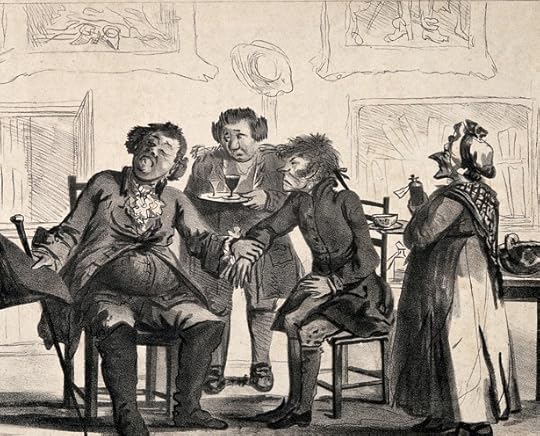
"Nothing is more deceitful," said Darcy, "than the appearance of humility. It is often only carelessness of opinion, and sometimes an indirect boast." - Jane Austen
Praise and sympathy: They are two of life’s essentials, the oxygen and carbon dioxide of social interaction. The first is most directly elicited by bragging, and the second, by complaining. The humblebrag—e.g. I’m exhausted from Memorial Day weekend; it’s soooo hard to get out of Nantucket—sits at the center of these competing needs. It is a boast in sheepish clothing, kvelling dressed in kvetch. And, like nearly all forms of multi-tasking, the drive to satisfy two goals at once typically results in double-failure.
Related Story
The Most Bragged-About Places of 2014
“Two fundamental goals in life are to get people to be impressed by us and feel sympathy for us,” said Michael Norton, a professor at Harvard Business School and co-author of the paper Humblebragging: A Distinct–and Ineffective–Self-Presentation Strategy. “People think they can get the best of both worlds by being indirect. Instead they are perceived as insincere."
False modesty is not a recent invention, as Jane Austen proves. But the humblebrag portmanteau, Norton said, might be a product of the social media age, due to the space limitations of platforms like Twitter. Stories that once cautiously mixed humility and boastfulness now appear, suddenly concentrated in the crucible of a Twitter box, to be inelegant attempts to disguise pride.
Across five studies, the researchers studied brags, complaints, and humblebrags on social media and in job-interview scenarios and evaluated how people reacted to each statement. In short, people respected complaints, tolerated brags, and disdained their intermixing. "The proliferation of humblebragging in social media and everyday life suggests that people believe it an effective self-promotional strategy,” they concluded. "Yet, our results show, people readily denigrate humblebraggers. Faced with the choice to (honestly) brag or (deceptively) humblebrag, would-be self-promoters should choose the former.” Interestingly, Norton added by email, there was no revealed difference between genders, even though other research has shown that aggressiveness and directness can be perceived differently when it comes from men or women.
There is a social cost to being too obvious. In general, being roundabout is just good manners. Young children are discouraged from beginning sentences with verbs ("Give me”) and over time learn that preambles are polite (“If it’s not too much trouble, and totally at your leisure, would you maybe take the time to give me …”). But humblebrags are particularly nauseating because they ooze insincerity, Norton said, which is considered even more worse than straightforward narcissism.
The surest way to bask in the glow of other people’s awe, he said, is to have somebody brag for you — particularly in a way that makes you seem perfectly innocent of all praise.
It seems to me that distance from praise is important, too. “The professor said I was the best painter at this school? I had no idea!” makes you sound brilliantly guileless. On the other hand, "Yes, I heard the professor’s compliment” requires you to feign, or even exhibit honest signs of, humility, which can always be read as insincere. You should not listen to people’s compliments too closely, but neither should you ignore them. And do not lie about your ability to hear them. "I can’t even tell when people are complimenting me, I must have acute compliment deafness” is the ultimate metahumblebrag.
It’s natural to want your friends to exhibit the perfect blend of praise and sympathy at all times, constantly showing breathless admiration for your genius while intuiting all the subtle ways that your daily life carries unspeakable and unique burdens. But it’s best to separate out your requests for sympathy and praise. When in doubt, complain constantly, bask in sympathy, and wait patiently for praise.









May 25, 2015
Game of Thrones: The Meeting Viewers Have Been Waiting for
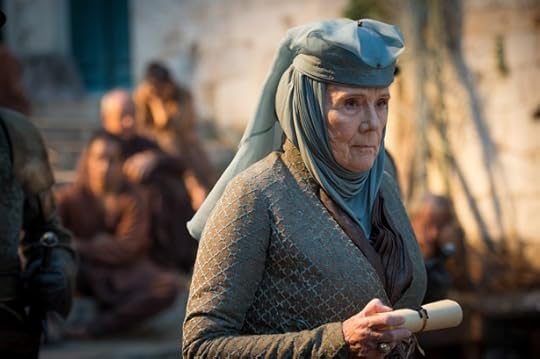
Spencer Kornhaber, Christopher Orr, and Amy Sullivan discuss the latest episode of Game of Thrones.
Orr: “It’s a pleasure to meet you, Your Grace. My name is Tyrion Lannister.”
Related Story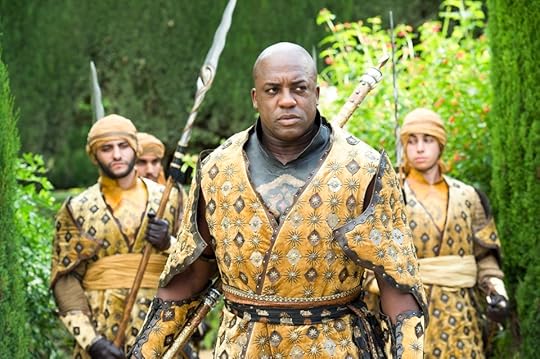
Game of Thrones: A Pointless Horror and a Ridiculous Fight
At last! I know I speak for quite a few book readers when I say that pretty much the only thing that kept me going through the eleventy thousand discursive, digressive pages of George R. R. Martin’s fifth tome, A Dance With Dragons, was the promise of Tyrion Lannister finally meeting up with Daenerys Targaryen. And, of course, after eleventy thousand pages, it never happened. So on behalf of myself and everyone else who sacrificed sleep, work, family, and friends waiting for this moment, let me say thank you, David Benioff and D. B. Weiss. Bonus points for what seemed to be a cameo by Strong Belwas (a book character who was written out of the show) as the nameless fighter who freed Tyrion from his chains.
As for the rest of episode—well, let’s just say I found it mixed, in no small part because it offered yet another exhibit in the unfolding case against Benioff and Weiss’s fascination with (an ungenerous viewer might say addiction to) sex, violence, and sexual violence. Let’s begin, as we so often must in discussions on this subject, with Ramsay Bolton, who, in case there’s anyone alive who’s missed the subtle cues, is Not a Nice Guy. (To paraphrase Voltaire: If Ramsay hadn’t already existed in the Martin books, Benioff and Weiss would have had to invent him.)
The good news: We didn’t actually have to watch Ramsay repeatedly brutalize Sansa Stark. But we did get to witness her battered body and hear her plead with Theon/Reek to save her from the nightly horrors inflicted upon her. Alas, despite intimations of possible bravery, he winds up delivering Sansa’s candle straight to Ramsay himself.
I’ve noted before my concern that while Benioff and Weiss excel at many narrative tasks (writing strong dialogue, engineering big moments) the single most crucial element of Martin’s work—the extraordinary cleverness of its plotting—is one that’s so far eluded his adapters. Tonight’s episode offered an object lesson. A few episodes ago, a friend suggested to me that while the mini-plot involving the “the North remembers” woman was fine for an adventure yarn, the truly cunning twist would be if she were in fact a Bolton spy, engaged to entrap Sansa.
When Theon went straight to Ramsay, I thought perhaps that was what had happened. But no such luck. This was a potential twist on which the showrunners whiffed entirely. (Shades of the missed Lannister Honeypot opportunity in season three.) Instead, we got to see yet another Ramsay torture/flaying victim, this one an old woman—I swear, half of Westeros must be missing its skin by now—with the camera lingering over her mutilated flesh. Even the Ramsay Bolton Fan Club, if such a thing exists (and if it does, you may want to keep an eye on it, FBI/NSA/PETA), must find this tedious by now.
To paraphrase Voltaire: If Ramsay hadn’t already existed in the Martin books, Benioff and Weiss would have had to invent him.Now, it was nice to see the best example to date of Dark Sansa becoming a player of the game, as she sows doubt with Ramsay over whether or not he should kill his pregnant stepmother before she births a potential dynastic competitor. (He’s Ramsay, so: duh.) Sansa’s line “Tommen Baratheon? Another bastard!” was particularly well-played. But we could easily enjoy such moments without having to endure all the look-what-a-bad-thing-Ramsay’s-done-today scenes that have now plagued the show for three seasons.
Rounding out this week’s more than ample sex-and-violence quotient were the attempted rape of Gilly, the successful beating of Sam, the subsequent sex scene between the two, and Tyene Sand’s R-rated “who’s the fairest of them all” quiz for Bronn. (Note: Under such circumstances, the use of slow-acting poison really constitutes cheating.) Here’s one breast, here’s the other, now she’s opening her tunic, the camera pans slowly, lasciviously down her torso (twice!) ... You can almost feel the showrunners congratulating themselves for their courtliness when they stop 5 percent short of full frontal. Again, guys: Seriously? It was bad enough when it looked as though the Sand Snakes were going to be poorly-written-but-otherwise-empowered woman warriors. Turning them into ogle-candy is not an improvement. (I’m going to take one more victory lap, however, for intuiting the perfect match between Bronn and the wicked ballad “The Dornishman’s Wife” three weeks ago. It’s practically become his theme song. And this week—as opposed to last—we got to hear the crucial final line.)
Moving on: It was nice to see Maester Aemon get a proper sendoff at the Wall, and nicer still that the show squeezed in several mentions of his brother “Egg” (a.k.a., King Aegon V), one of the two protagonists of Martin’s likable “Dunk and Egg” novellas. But things look downright mutinous at the Wall, with Jon headed for Hardhome, Ser Alliser acting especially Alliser-y, and even Olly looking ever more crabby about a possible alliance with the mama- and papa-eating Thenns. Watch your back, Sam.
Things are not looking particularly good for Stannis, either. Just ask Nazi Germany (no ethical comparison to the Baratheons intended) how winter weather can affect a military offensive. Stephen Dillane continues his strong run this season, especially when Melisandre asks him—it wasn’t hard to see this coming—to sacrifice the royal blood of his daughter. I have to say, Stannis’s response seemed sensible enough: If leeched blood was enough to enable the long-distance deaths of three kings, shouldn’t it suffice to knock off a couple of nearby Boltons? But I don’t pretend to be an expert in R’hllorian magic.
Back in King’s Landing, the storyline with the Sparrows and Margaery’s imprisonment seems finally to have slowed down a bit from the brusque, careless pace that characterized episodes four and six. Diana Rigg’s Lady Olenna was a pleasure as always, and never more so than when she cut off the High Sparrow: “Don’t spar with me, little fellow.” I can’t help but wonder once again, though: Where were those men-at-arms accompanying her last week, when lightly armed members of the Faith Militant took her granddaughter, the queen, into custody?
The Queen of Thorns’ scene with Littlefinger was also intriguing, if a tad opaque. It’s nice to see Westeros’s top two schemers (at least until the reappearance of Varys) co-plotting again. My assumption is that the “handsome young man” who Littlefinger says he gave to Cersei as a “gift”—not coincidentally the title of the episode, which also refers to Jorah’s delivery of Tyrion—is his former employee Olyvar, whose testimony got both Loras and Margaery locked up last week. (Brief digression: There were many, many things wrong with that inquest scene, but among the most appalling was the Perry-Mason-esque moment in which Olyvar reveals that he knows about Loras’s Dorne-shaped birthmark. But they’ve already established that Olyvar was Loras’s squire. Of course he’s seen his knight naked!)
Somewhat less clear was the identity of the “handsome young man” Littlefinger claimed to be gifting Olenna. I assume we’re meant to understand that it was Lancel, whose testimony—in an exquisite moment of balance—gets Cersei herself locked up. But there are a few problems with this. How is Littlefinger gifting Lancel to Olenna now, when it seems that Lancel’s been confessing to the High Sparrow for weeks and probably months already? And given this, why did the High Sparrow wait until now to arrest Cersei? Again, I’m glad this storyline finally slowed down this week, but it still seems a tad hasty and confused.
In any case, we’ve gotten where we need to be, with both queens imprisoned and an impotent boy on the throne. (Paging Kevan Lannister! Whatever you think of Cersei, this seems like a time to stop dorking around in Casterly Rock and come save your royal family.) Two final observations: 1) How marvelous was Cersei’s last, pre-downfall dig at Margaery, “I brought you this venison. It’s quite good. I had it myself for supper only last night”; and 2) I always assumed that the defining characteristic of the “black cells” of King’s Landing—please note the name—was that they didn’t have huge windows letting in sunlight. If I didn’t know better, I’d guess that the High Sparrow had sentenced Margaery to Death by Melanoma.
But aside from Ramsay’s tedious and never-ending depredations—is there some way I can put a large bounty on the head of a fictional character?—pretty much everything else is a quibble when compared to the fact that Tyrion and Daenerys have finally met. The two storylines that we’ve followed for four-and-a-half seasons (and in the case of book readers, approximately infinity pages) have at last intersected. Winter is obviously coming. But so, too, may be closure, even if it takes a couple more seasons.
What did you guys think?
Kornhaber: I thought it was a beautiful-looking episode that contained some ugly ideas. Director Miguel Sapochnik brought a steady hand and cinematic flair to even the moments of walking and talking, and a few shots, like the one of Theon in silhouette outside of Sansa’s door, will stick with me for a while.
But so will the sight of the eldest Stark daughter turned serial-abuse victim, pleading with the man who she believes killed her brothers to offer her the smallest bit of assistance. The show kept the further harm that’s befallen her since her marriage-starting rape off-screen, but that’s no mercy when we have to then hear Sansa talk about the hell she’s living through each night. Just as horrible was seeing the tantalizing thread of hope for her in the form of Theon’s help and northern loyalists be snipped in a few economical yet gruesome shots.
As viewer backlash unfolded last week—from this roundtable, from other viewers, and from a U.S. senator—I found my own feelings about the Sansa rape scene falling, to my own surprise, on the apologetic side. Sexual assault has always been an integral part of the Thrones story, was always a threat hanging over Sansa, and was a natural outcome to the plot we’d been watching unfold this season. I can sympathize with viewers for whom it was the final horror that made them decide Thrones is too brutal to keep watching; I agree with viewers who think that Littlefinger’s arrangement of this marriage has not been the product of airtight storytelling and character development. But I hadn’t yet come around to the idea that Sansa’s wedding night was a screw-up of, say, the level of the Jaime/Cersei cryptside nonconsensual-sex scene.
But the follow-up episode has me rethinking things, and not in a happy way. It’s one thing for Benioff and Weiss to say that they’re following the story where it would logically go, and that themes are best left to high-school English papers—a.k.a., dramatic realism trumps the need to Make a Point. But the truth is, life is not a mere series of knowable causes and effects, and fiction writers do have to make decisions. There is an alternate Thrones storyline, just as or more plausible than the one we’ve seen, in which Sansa isn’t raped. And at the very least, there is one that doesn’t involve the political maneuvering of a megalomaniacal brothel owner resulting in the teenage princess viewers have lived with for five years becoming a battered, kept woman in her childhood home, with her one ally skinned alive. The show has chosen to take the Sansa storyline to the absolute darkest place it could go, and to what end? When Ned, Robb, and Catelyn met their horrible fates, we could at least see that it was the result of them making decisions out of a naïve sense of honor. But there’s no such lesson here with Sansa. She’s playing the game, and her reward is misery.
Sansa is playing the game, and her reward is misery.The visceral grossness of the Sansa stuff was at least of a piece with the episode’s other storylines, in which the entrapped peoples’ dire situations were underlined in grim fashion. Gilly and Sam find that the only creature at The Wall who doesn’t want to do them violence is a dog; Margaery must tolerate not only a dank cell but also the false piety of her mother-in-law; Bronn’s locked up and poisoned, with only characters from a jailhouse softcore video to give him conversation. The other big motif was expressions of scorn and spite—both to and from that “hateful bitch” (Margaery’s words) Cersei, from Stannis to Melisandre at the hint of child sacrifice, and from Dany to the triumphant gladiator Jorah.
I agree that Tyrion’s arrival in Meereen is an intriguing development. I couldn’t possibly guess what will come of it, other than some nicely tart banter and a medieval take on Contagion once Jorah the champion starts shaking hands around town. But just as you, Chris, were not entirely clear what was up with Littlefinger in this episode, I was confused during the pit fight. Ceremonial combat was legalized by Daenerys under the assurance that slaves wouldn’t be involved—and yet Jorah and Tyrion are sitting in the dugout, enslaved? What did I miss? (Seriously, tell me.) And I now get that the large fellow who freed Tyrion is a book character, but that doesn’t make the fact of his actions any less inexplicable. Ever since the nonsense scenes in Dorne and King’s Landing last week (great point about knowledge of Loras’s birthmark being evidence only that the knight-squire relationship involves locker-room-ish situations), I think my plausibility sensors have been on high alert. If this is the season where Benioff and Weiss are improvising more and more, it’s bad news for the future of the show if suddenly we’re seeing a rise in the number of “huh?” moments.
I fear I’ve come across as too negative. As a reminder of why we watch Thrones in the first place, look to the scene with the High Sparrow confronting Cersei. Note the writing, how it roots his character in the history of the realm, keys into real-world dynamics with regards to faith, and bridges the High Sparrow’s seemingly humble nature with the violence that his followers have inflicted. And check out Pryce’s face, how it slowly hardens from conviviality to menace. When Cersei’s taken away, she’s finally facing the consequence of her reckless plotting. Hopefully, the show itself won’t eventually be in the same sort of situation.
Amy, what’d you think?
Sullivan: I’m reluctantly sticking with the show to see where it takes these new storylines through this season’s finale, but this week didn’t do much to restore my faith in the show runners. Other than the very welcome addition of plenty more Lady Olenna. Her expanded role—like that of Tywin Lannister—has been one of their best calls in adapting the books.
As for the backlash to last week’s final scene, I can speak only for myself, but it certainly wasn’t the case that my exquisite, delicate sensibilities were offended by the mercifully less-than-explicit treatment of marital rape. Nor would I like to pretend that medieval relationships were all love matches or that sexual violence wasn’t rampant. Believe me, when I play the “when in world history would you have wanted to live” game, no era other than our own is even vaguely appealing for a woman of any class. Everywhere in the world, they have always hurt little girls.
The portrayal of Catelyn and Ned Stark’s marriage was fascinatingly realistic along these lines. She was upfront about the fact that she didn’t want to marry him initially—she had been promised to his older brother, Brandon, who died in the rebellion—she has never forgiven him for bringing the bastard Jon Snow into their young family. And one imagines that their wedding night was not a passionate affair, and could even have been the kind of marital rape that characterized so many domestic unions.
What was it the High Sparrow said to Laddy Olenna? “When the many stop fearing the few…” Welcome to rebellion, Queen Cersei.But Benioff and Weiss haven’t decided to marry Sansa off to a nobody nobleman in order to portray the loneliness and abuse in the average Westerosi marriage. They paired her up with the biggest sociopath in this fictional universe. Was violence and abuse to be expected once we knew that match was Sansa’s fate? Of course. But they chose to invent this plot for her. And with that narrative choice comes some responsibility to make sure that the payoff isn’t just more torture porn and unrelenting punishment of a female character.
Spencer, you asked to what end is this Sansa storyline going to the darkest place. I hesitate to point out, pace Theon, that it can always get worse with Ramsay. But even if it doesn’t, the only thing this has accomplished is giving more urgency to Stannis’s campaign to take Winterfell. Sansa plays the game of thrones whenever she has the chance, but her agency is extremely limited, and she is—as has been the case since late in the first season—completely and utterly alone.
In fact, one of the few commentaries on the Sansa rape scene that made sense to me was the idea that it was more about Theon than Sansa—that being forced to watch Ramsay rape one of his pseudo-sisters would push Theon over the edge in actually rebelling against his tormentor. That’s why the camera pushed in on Theon’s face while we heard Sansa’s cries, and why we needed the rape to occur in a scene at all instead of getting the aftermath we witnessed in this episode.
But that obviously hasn’t happened. Sansa gave it her best: “Your name is Theon Greyjoy, last surviving son of Balon Greyjoy, Lord of the Iron Islands. Do you hear me?” But Theon/Reek is still so completely terrified of Ramsay that Sansa’s pleas only move him to scurry back to his master with word of her attempted signals for help. I didn’t need to see yet another flayed victim or hear Ramsay tell Sansa “You should hold onto your candles—the nights are so long now” to understand that she’s a prisoner with no hope.
Why am I still watching, you ask? For scenes like Lena Headley just killing it, expressing the ferocity of her mother’s love to Tommen. In practice, she is of course motivated by more than just the protection of her children. But watch that again—“I would burn cities to the ground. You are all that matters. You and your sister.” Cersei has done some very bad things, but this is the story she tells herself, a variant of her father’s constant reminder that family is everything. And it’s why she lashes out with such righteous fury when anyone questions her. That will surely not serve her well in whatever upcoming trial she faces.
That final showdown between Cersei and the High Sparrow was nearly perfect, with his face hardening and hers freezing the moment she realizes that this particular game is not—and never has been—under her control. What was it the High Sparrow said to Laddy Olenna? “When the many stop fearing the few…” Welcome to rebellion, Queen Cersei.
I do wish, as both of you have written, that the Sparrow storyline had been given more time to develop. They have been written as crazed fanatics obsessed with immorality, when in fact a grassroots religious movement would be a natural response to the swamp of violence and poverty and inequality that Westeros has become. We spend so much time with the kingdom’s one percent that it’s easy to forget how ill-gotten and undeserved their power and riches are.









May 24, 2015
John Nash's Beautiful Life

John Nash, a Nobel laureate and mathematical genius whose struggle with mental illness was documented in the Oscar-winning film A Beautiful Mind, was killed in a car accident on Saturday. He was 86. The accident, which occurred when the taxi Nash was traveling in collided with another car on the New Jersey Turnpike, also claimed the life of his 82-year-old wife, Alicia. Neither of the two drivers involved in the accident sustained life-threatening injuries.
Born in West Virginia in 1928, Nash displayed an acuity for mathematics early in life, independently proving Fermat’s little theorem before graduating from high school. By the time he turned 30 in 1958, he was a bona fide academic celebrity. At Princeton, Nash published a 27-page thesis that upended the field of game theory and led to applications in economics, international politics, and evolutionary biology. His signature solution—known as a “Nash Equilibrium”—found that competition among two opponents is not necessarily governed by zero-sum logic. Two opponents can, for instance, each achieve their maximum objectives through cooperating with the other, or gain nothing at all by refusing to cooperate. This intuitive, deceptively simple understanding is now regarded as one of the most important social science ideas in the 20th century, and a testament to his almost singular intellectual gifts.
“The ideas I had about supernatural beings came to me the same way that my mathematical ideas did.”But in the late 1950s, Nash began a slide into mental illness—later diagnosed as schizophrenia—that would cost him his marriage, derail his career, and plague him with powerful delusions. Nash believed at various times that he was the biblical figure Job, a Japanese shogun, and a “messianic figure of great but secret importance.” He obsessed with numbers and believed the New York Times published coded messages from extraterrestrials that only he could read.
Mental institutions and electroshock therapy failed to cure him, and for much of the next three decades, Nash wandered freely on the Princeton campus, scribbling idly on empty blackboards and staring blankly ahead in the library. Atlantic contributor Robert Wright, an undergraduate at Princeton in the late 1970s, remembers Nash as “some math genius that went crazy” who wore colorful sneakers and quietly watched people. His schizophrenia removed him completely from his work. By the time Nash was awarded the Nobel prize in Economics in 1994 (along with John Harsanyi and Reinhard Selten), he hadn’t published a paper in 36 years.
But like a child cured of a nightmare by the switch of a light, Nash recovered from his illness seemingly by choosing not to be sick anymore. “I emerged from irrational thinking, ultimately, without medicine other than the natural hormonal changes of aging,” he wrote in 1996. Five years later, the release of the film A Beautiful Mind, based on Sylvia Nasar’s 1998 book of the same name, amplified Nash’s extraordinary life story to an international audience. He continued to work, travel, and speak at conferences for the rest of his life.
It’s tempting to wonder what Nash might have accomplished had mental illness not robbed him of so many productive years. But the “beautiful mind” that gave him such prodigious mathematical talent was indivisible from the one which spawned powerful delusions. In her study of creativity published in the July/August 2014 edition of the Atlantic, Nancy Andreasen related a memorable anecdote from Nasar’s book. Upon visiting Nash at a mental institution, a colleague asked how a man so devoted to reason and logical truth could believe that extraterrestrials were sending him messages.
“Because the ideas I had about supernatural beings came to me the same way that my mathematical ideas did,” replied Nash. “So I took them seriously.”









Superman's Dark Past

Since the official teaser trailer for Batman v Superman: Dawn of Justice debuted online in April, fans and critics alike have been discussing the kind of Superman Zack Snyder is going to depict in his Man of Steel sequel. The controversy stems from Snyder’s decision to cast Superman as a brooding, Dark Knight-like character, who cares more about beating up bad guys than saving people. The casting split has proved divisive among Superman fans: Some love the new incarnation, citing him as an edgier, more realistic version of the character.
But Snyder’s is a different Superman than the one fans grew up with, and many have no problem expressing their outrage over it. Even Mark Waid, the author of Superman: Birthright (one of the comics the original film is based on), voiced his concern about Man of Steel’s turn toward bleakness when it came out in 2013:
With the exception of the first-flight beat—the smile Superman gets when he first takes to the air—it’s utterly joyless. From start to finish. Utterly. Joyless. And I just have no interest in relentless joyless from a guy who can fly.
But what many fans don’t realize is that Superman hasn’t always been the Big, Blue Boy Scout they’ve come to know and love. In fact, in the very early stages of the character’s development, he wasn’t a hero at all, but a villain. And even after Superman became an enforcer of good in his earlier years, his brand of justice was as gray, morally speaking, as the color palette Snyder’s films embrace. In other words, the newest incarnation of Superman isn’t so much a betrayal of the character’s origins as it is a perhaps unwitting return to them.
Related Story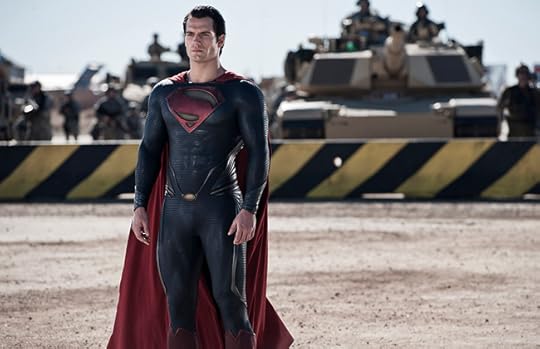
Man of Steel: The Dark Knight-ification of Superman
Despite what many believe, Superman’s first appearance wasn’t in Action Comics No. 1 in June 1938. Jerry Siegel and Joe Shuster first published the character in a 1933 illustrated short story called Reign of the Superman as a bald supervillain not unlike Lex Luthor. Instead of physical superpowers, though, Superman had the power to read and control people’s minds, all in an effort to take over the world. Siegel, however, had second thoughts about Superman as a villain and reimagined him as a hero—some speculate that the inspiration for the change was the murder of his father at the hands of a robber. The revised character had enough strength to lift a car and the ability to jump great distances, exactly one-eighth of a mile.
When the comic book was still a nascent medium in the late 1930s and early 40s, Superman was more of an enforcer on behalf of the poor and disenfranchised. He rallied against the social injustices created by the corporate and political greed that led to the Great Depression. In the beginning, Shuster and Siegel’s Superman was very much grounded in the real-world problems facing many Americans: poverty, inadequate housing conditions, mobster violence, and corporate and political corruption. In his book Men of Tomorrow: Geeks, Gangsters and the Birth of the Comic Book, Gerard Jones describes the early Superman in this way, “This was a grim, almost cruel Superman. His feats had no flamboyance ... The whole strip had the metallic odor of the early Depression.”
This Superman was far from the godlike hero and the epitome of morality he’s frequently portrayed as. In the first issue of Action Comics, for example, Superman faces off against a female criminal wielding a gun. She shoots at him and as he grabs her gun, crushes it in his hand, and threatens to do the same to her—something the “newer” Superman wouldn’t dream of doing. In another story, a villain threatens to shoot Superman, who responds by threatening to shoot him in return. Superman lives more by the Old Testament code of an “eye for an eye” rather than the “turn the other cheek” philosophy of Jesus’ Biblical sequel. This might not sound like a big deal, but Superman over the years has morphed into an ideal for fans to aspire to; as a symbol of hope, he’s held to a higher standard. As Marlo Brando, as Superman’s father Jor-El, says to his son in Richard Donner’s Superman: The Movie, “They can be a great people, Kal-El. They wish to be. They only lack the light to show the way. For this reason above all—their capacity for good—I have sent them you, my only son.”
And yet in Bradford Wright’s book Comic Book Nation, the author writes:
Audiences familiar with the rather stiff and morally upright character that Superman would later become would be surprised to discover that Siegel and Shuster’s original character was actually a tough and cynical wise guy, similar to the hard-boiled detectives like Sam Spade who also became popular during the Depression years. Superman took to crime-fighting with an adolescent glee, routinely taking the opportunity to mock and humiliate his adversaries as he thrashed them.
The early Superman not only makes threats, he also delivers on them. And what makes his actions even more uncharacteristic is that he’s threatening mere mortals, not evil superhumans. In one story, a madman with a container of poisonous gas drops it on the floor as Superman advances toward him. As the gas fills the air, choking the man, Superman watches him die saying, “You’re only getting a taste of the fate you planned to doom others to,” effectively being a murderer by purposely refusing to save him. (And it happens other times throughout the hero’s 77-year-history). In another scenario, Superman threatens to leave two criminals hanging underneath an airplane as it’s about to land. He tells them what to expect if they don’t give him answers: “When the plane lands, you won’t make a pretty sight. Confess, or I won’t release you.” Luckily for the thugs and for readers, they do.
Superman’s more violent, or perhaps more grounded persona changed after The Adventures of Superman hit the radio airwaves in 1940. It was on that show that he gained the ability to fly, the nickname “Champion of the Oppressed” was dropped and the catchphrase “Truth, Justice, and the American way” forever became associated with the hero now known as the Man of Steel. Other changes occurred in the radio show that became part of the Superman mythos in the comics, the 1950s TV show starring George Reeves, and the Christopher Reeve movies in the 70s and 80s. Kryptonite was created as Superman’s only weakness to allow voice actor Bud Collyer, who voiced Superman and his alter ego Clark Kent, vacation time. Characters such as the Daily Planet editor-in-chief Perry White and his best pal Jimmy Olsen were created for the show and later incorporated into the comics. The show also made famous this introduction:
Faster than a speeding bullet.
More powerful than a locomotive.
Able to leap tall buildings in a single bound.
Look! Up in the sky! It's a bird! It's a plane! It's Superman!
Gone was the darker, more cynical, and sarcastic Superman of the Depression-era. In his place came a much more fun-loving, lighter version—one more suitable for the mainstream, kid-friendly radio audience that comic books weren’t yet reaching in America.
Leading up to the Japanese attack on Pearl Harbor in December 1941, Superman—along with other comic-book superheroes—became much more patriotic. As a direct result of the bombing, Superman became a channel of American propaganda at its finest. Because Superman could literally win the war by himself, the editors at D.C. Comics thought it might be disrespectful to the troops to have story depicting him fighting the real-world bad guys. Instead, they figured the best way he could help the war effort was to advertise the sale of war bonds and encourage kids to recycle scrap metal for weapon manufacturing.
By the end of the 1950s, Superman had gained most of the powers fans are familiar with: flight, heat vision, super strength, super speed, x-ray vision, super hearing, and super breath. As the Man of Steel became more powerful throughout the following decades, D.C. Comics struggled to find interesting storylines to keep Superman relevant as historic events such as the civil-rights movement, the assassination of President John F. Kennedy, and the Vietnam War divided America. Against the backdrop of the social turmoil of the 1960s, things like comic-book superheroes seemed trivial.
D.C. Comics struggled to find storylines to keep Superman relevant as historic events divided America.Superman would go in and out of style throughout the following decade. The 1978 feature film starring Christopher Reeve solidified Superman as the hero most people know him as today—an inspirational beacon of hope and goodness. He never lies, he doesn’t fight unless he has to, and he would do anything to protect the people of Earth. He’s mannerly and wholesome and he’s ... well, he’s perfect.
And that’s the problem.
How do you write Superman—the most powerful man on Earth, the man who can blow out stars with a single breath, who can see through most anything, who has heat vision and super breath, who essentially is indestructible and has no character flaws whatsoever—in a compelling way? That’s Superman’s biggest problem, and it’s the one the writers and editors at D.C. Comics have faced continually over the years; trying to make Superman interesting and relevant.
And then along came Zack Snyder with 2013’s Man of Steel. The director of 300 and Watchmen took everything fans loved about Superman and threw it out the window, stripping the character down to his original essence. He went back to the beginning; all of the way back to Action Comics No. 1. Snyder made Superman a jerk again, or edgy, depending on your perspective.
Judging from the trailer for Batman v Superman, it looks like Snyder is playing off the controversy the first film caused: Superman’s forever-long fight with Zod and his violent death at the hands of the Man of Steel, along with the destruction of Metropolis, and Superman’s utter lack of effort to try to save people. The first line of narration addresses it directly: Is it really surprising that the most powerful man in the world is a figure of controversy?
The trailer brings up other compelling points. If Superman were real, how would people handle such a god-like being? Would we accept him or reject him? Would we follow him as a source if inspiration, or would we try to capture that power and harness it for ourselves?
For decades, Superman has been a much-needed source of hope and inspiration. From the John Williams score to the character’s trademark “S” to the bright red, blue, and yellow of his costume, Superman has become the symbol of our better selves. As for the hero Snyder will be delivering in the 2016 Man of Steel sequel, the question arises: What kind of Superman will we be seeing? The Batman v Superman trailer shows a much more cynical world than the Donner films. The people of Metropolis don’t seem to be as trusting of a powerful stranger from another planet. If Snyder is mirroring modern society in the Man of Steel sequel, then let’s hope the dark days of Superman are only temporary.









May 23, 2015
'This Is Straight Murder': a Troubling Acquittal in Cleveland
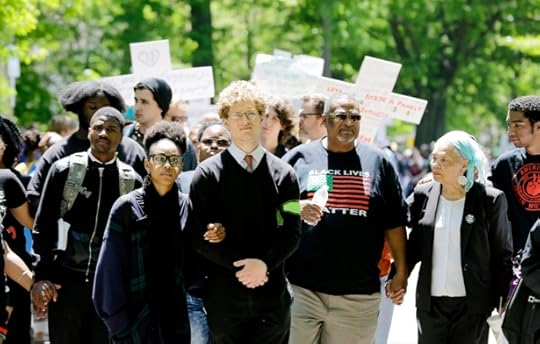
On November 29, 2012, police officers and witnesses heard what appeared to be gunshots coming from a car driving near a police station in Cleveland. A high-speed car chase ensued, drawing in over 100 officers on duty, before the police managed to corner the car. Thirteen police officers then fired 137 rounds of ammunition at the vehicle, whose occupants Cleveland police suspected were armed. After the other officers stopped firing, 31-year-old Michael Brelo climbed on top of the hood of the suspect’s car and fired 15 more rounds at close range. When the shooting stopped, the car’s occupants, 43-year-old Timothy Russell and 30-year-old Malissa Williams, were dead. Both were unarmed. The “gunshot” witnesses heard turned out to be a backfiring car.
Brelo, who is white, was charged with two counts of voluntary manslaughter. On Saturday, an Ohio court acquitted him, claiming that the officer’s actions were “reasonable despite knowing now that there was no gun in the car and he was mistaken about the gunshots.” Barring the subsequent prosecution of other police officers involved in the shooting, no officers will serve time for the deaths of Williams and Russell.
Relatives and supporters of the victims reacted to the verdict with outrage. “The police should have went to jail for life for this,” said Alfredo Williams, Malissa’s brother. “This is straight murder.” U.S. Representative Marcia Fudge, whose 11th Congressional district includes the part of Cleveland, added that “the verdict is another chilling reminder of the broken relationship between the Cleveland Police Department and the community it serves.”
“The verdict is a reminder of the broken relationship between the police department and the community it serves.”Cleveland’s Troubled Police Force
Tensions between African-Americans and police officers charged with serving and protecting them have intensified throughout the United States in recent years, as the deaths of Michael Brown, Trayvon Martin, and Eric Garner stirred nationwide outrage. But the problem has been particularly acute in Cleveland. In a report published last December, the Department of Justice found numerous instances of abuse, misconduct, and excessive force. A police officer shot and killed 12-year-old Tamir Rice after the boy pulled out a water gun while playing in the park. A 300 pound police officer who sat on and repeatedly punched a 13-year-old boy in his custody. An officer tasered another boy, strapped to a gurney after suffering a seizure on a Cleveland sidewalk, for making verbal threats.
According to the DOJ, these incidents occurred within a dysfunctional police culture where superiors in the department failed to rein in abusive behavior, review excessive use of force, or investigate allegations of misconduct. Attempts to discipline the officers responsible for the November 2012 shooting of Williams and Russell have caused additional problems. Last fall, nine of the 13 officers involved in the case filed a lawsuit alleging reverse racial discrimination after being punished with three days of administrative leave and 45 days of restricted duty.
A Nationwide Problem
But the problems resonate far beyond Cleveland. Police departments across the country have struggled to achieve racial diversity, leading to jurisdictions where a largely white police force serves a largely black community. A ProPublica study cited by Vox found that between 2010 and 2012, police officers were 21 times more likely to kill a black teenager than a white teenager. Records have shown that police officers who kill unarmed civilians are rarely convicted, and are seldom required to compensate survivors of their victims in civil lawsuits. Six months after Tamir Rice’s death, the police officer responsible hasn’t even been questioned.
In a press conference after the verdict, Cleveland mayor Frank Jackson appealed for calm.
“This is a moment that will define us as a city,” he said.
His words apply far beyond Cleveland’s borders.









'Well Done': The Legalization of Gay Marriage in Ireland
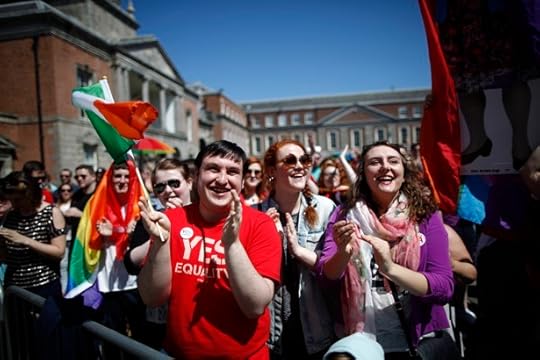
Until 1993, homosexuality was a criminal offense in Ireland. Now, Ireland’s gay population has earned the right to marry. Ireland overwhelmingly approved a referendum to allow same-sex marriage on Saturday, becoming the first country in the world to achieve marriage equality through the popular vote. Though the final tally is not yet known, the referendum obtained the support of an estimated 65 percent of the population. David Quinn, the director of the Iona Institute and a prominent supporter of the “no” campaign, conceded the referendum’s defeat early Saturday morning.
Congratulations to the Yes side. Well done. #MarRef
— David Quinn (@DavQuinn) May 23, 2015
Supporters of marriage equality erupted with jubilation in Dublin, Ireland’s capital, which has long been a liberal stronghold. But the referendum received support throughout the entire country, even in rural districts that have traditionally resisted social change.
Gay rights champion David Norris gets enthusiastic reception at Dublin Castle. #marref http://t.co/IO5Jk3ITGW https://t.co/bImqgprinw
— Jim Roberts (@nycjim) May 23, 2015
As a result of the referendum, which amends Ireland’s constitution to approve marriage of two people “without distinction as to their sex,” gay couples in the country will be able to marry as soon as this summer.
A “Most Catholic Country”
Saturday’s legalization of same-sex marriage represents a stunning turnaround in an Ireland that, for decades, was known for its religiosity and social conservatism. Deemed the “world’s most Catholic country” by Pope Paul VI in 1946, more than 90 percent of Irish citizens attended Mass as recently as the 1970s. Correspondingly, the church’s conservative values held sway over the country’s political and legal life. Homosexuality remained a criminal offense until 1993, 26 years after a similar law was overturned in England, and Irish voters only legalized divorce (by a slim margin) in 1995. Abortion remains illegal to the present day.
Ireland’s evolution on same-sex marriage was not unlike similar movements across Europe and North America. But the country’s turn toward liberal social values also reflects the declining influence of the Catholic Church in the country, whose sexual abuse scandal dominated national headlines for years. A poll conducted in 1981 showed that 51 percent of Ireland’s population had confidence in the church. By 2008, that number had fallen to 19 percent. Once an exporter of Catholic priests, only 15 men across the entire country were ordained in 2014.
A People’s Victory
Universally illegal until 2001, same-sex marriage is permitted across western Europe, where only Italy recognizes neither marriage nor non-marriage partnerships. But Ireland is so far unique in achieving marriage equality without legislation.
“While there is no doubt that certain politicians deserve applause for their work during the campaign, this was a people’s campaign,” wrote Una Mullaly in the Irish Times. “The work on the ground was by and large done by regular citizens, who had nothing to gain other than the betterment of society.”









Long Novels and the End of Mad Men: The Week in Pop-Culture Writing
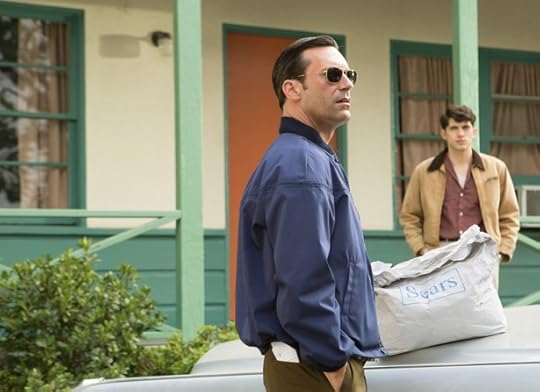
A Woman on the Edge
Jessica Gross | Longreads
“If you look at memoirs from time immemorial, a man in his fifties will repeat a whole conversation the family had when he was eight years old. What? He’s making it up. And there’s nothing wrong with it.”
Los Angeles Plays Itself
Dayna Tortorici | n+1
“Nothing in Los Angeles happens overnight, but this is how people like to talk. Why, I don’t know, but I think it has something to do with wanting the city to be either a dream or a nightmare, like in David Lynch’s Mulholland Drive.”
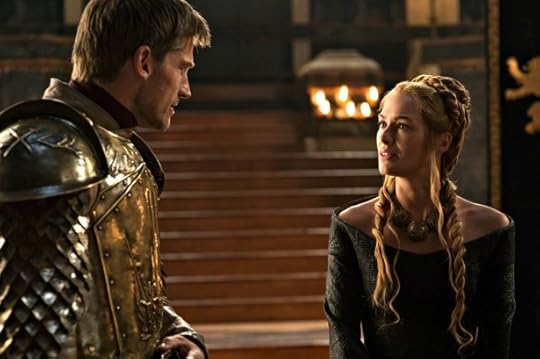
Last Week's Edition: Pixar and TV Sex
The Original, Resonant, Existentially Brilliant Mad Men FinaleEmily Nussbaum | The New Yorker
“We could talk endlessly about this show and this episode; this is a day-after recap, though, which has its limits. Has Don become the ‘Real Thing’? My Magic 8-Ball says, ‘Very Doubtful.’”
Judy Blume Knows All Your Secrets
Susan Dominus | The New York Times
“In so many of Blume’s books, her main characters’ bodies insist on their inherent, primal messiness; they crave, they ooze, break out in rashes as strange and humiliating as desire itself. The body is reckless, but telling.”
All (Hopefully) of the Bad Arguments About Rape on Game of Thrones Debunked
Amanda Marcotte | Rawstory
“The fact that a lot of people still expect things like the last-minute daring rescue—or assume that being raped makes a character weak—shows that while they may intellectually know that rape is wrong, they haven’t really haven’t grappled with what rape is, what it does to people, and what is so wrong about it.”
When Did Books Get So Freaking Enormous? The Year of the Very Long Novel
Boris Kachka | Vulture
“At publishers’ sales conferences, buzzwords like important and audacious quickly give way to immersive and addictive.”
Not My Apocalypse: A Black Woman Reads a White-Guy Prepper Magazine
Latoya Peterson | Fusion
“Reading OFFGRID makes me realize that though the future might be a brave new world, it will have the exact same people in it.”
Game of Thrones Has Always Been a Show About Rape
Alyssa Rosenberg | The Washington Post
“There’s no requirement that anyone like any of these storylines or that anyone who feels exhausted from spending his or her days in a world marked by sexual violence retreat to a worse one for pleasure. But that’s not the same thing as proof that Game of Thrones is generally careless in its depiction of sexual assault or that rape doesn’t serve a purpose on the show.”









The Weird End of the NSA's Phone Dragnet

In the wee hours of Saturday morning, the U.S. Senate played host to a moment that took mass surveillance on the phone records of Americans from outrage to farce.
The NSA’s phone dragnet had already been declared illegal.
Earlier this month, a federal appeals court ruled that while the surveillance agency has long claimed to be acting in accordance with Section 215 of the Patriot Act, the text of that law in fact authorizes no such program. The Obama Administration has been executing a policy that the legislature never passed into being.
But the law that doesn’t even authorize the program is set to expire at the end of the month. And so the court reasoned that Congress could let it expire or vote to change it. For this reason, the court declined to issue an order shutting the program down.
President Obama didn’t shut the program down either. One might think the illegality of its ongoing operations would bother him, but he’s effectively punted to Congress too.
Days ago, the House of Representatives acted: they voted overwhelmingly, 338 to 88, “to end the National Security Agency's mass collection of phone records from millions of Americans with no ties to terrorism,” passing the USA Freedom Act, an effort “to rein in NSA surveillance while renewing key sections of the... Patriot Act.” The bill divided civil libertarians, some of whom thought it didn’t go far enough because the government could still access bulk data held by phone companies.
That brings us to the wee hours of Saturday morning. “After vigorous debate and intense last-minute pressure by Republican leaders, the Senate on Saturday rejected legislation that would end the federal government’s bulk collection of phone records,” The New York Times reports. “With the death of that measure — passed overwhelmingly in the House — senators then scrambled to hastily pass a short-term measure to keep the program from going dark when it expires June 1 but failed.”
The outcome is good for civil libertarians: the House is in recess; barring the unexpected, the phone dragnet will end June 1, when key provisions of the Patriot Act expire. And Senator Rand Paul seems to deserve extra credit for that outcome: “The measure failed in the Senate 57 to 42, with 12 Republicans voting for it, shortly after midnight because Mr. Paul, a candidate for the White House, dragged the procedure out as he promised to do in fund-raising tweets and emails.”
That happy outcome aside, there’s a farcical aspect to the process.
There’s a program that Congress never approved. The House weirdly had to vote to get rid of it. They did so. But the Senate had to follow suit, voting to get rid of the program that they never passed. And they failed even though 57 Senators were in favor. So an illegal program will continue, despite majorities in both houses of Congress casting votes to end what they never began. And the only reason their failure doesn’t matter is that legal provisions that don’t in fact authorize the program will soon expire. And then it will end. What a strange democracy we’ve got.









Atlantic Monthly Contributors's Blog
- Atlantic Monthly Contributors's profile
- 1 follower



